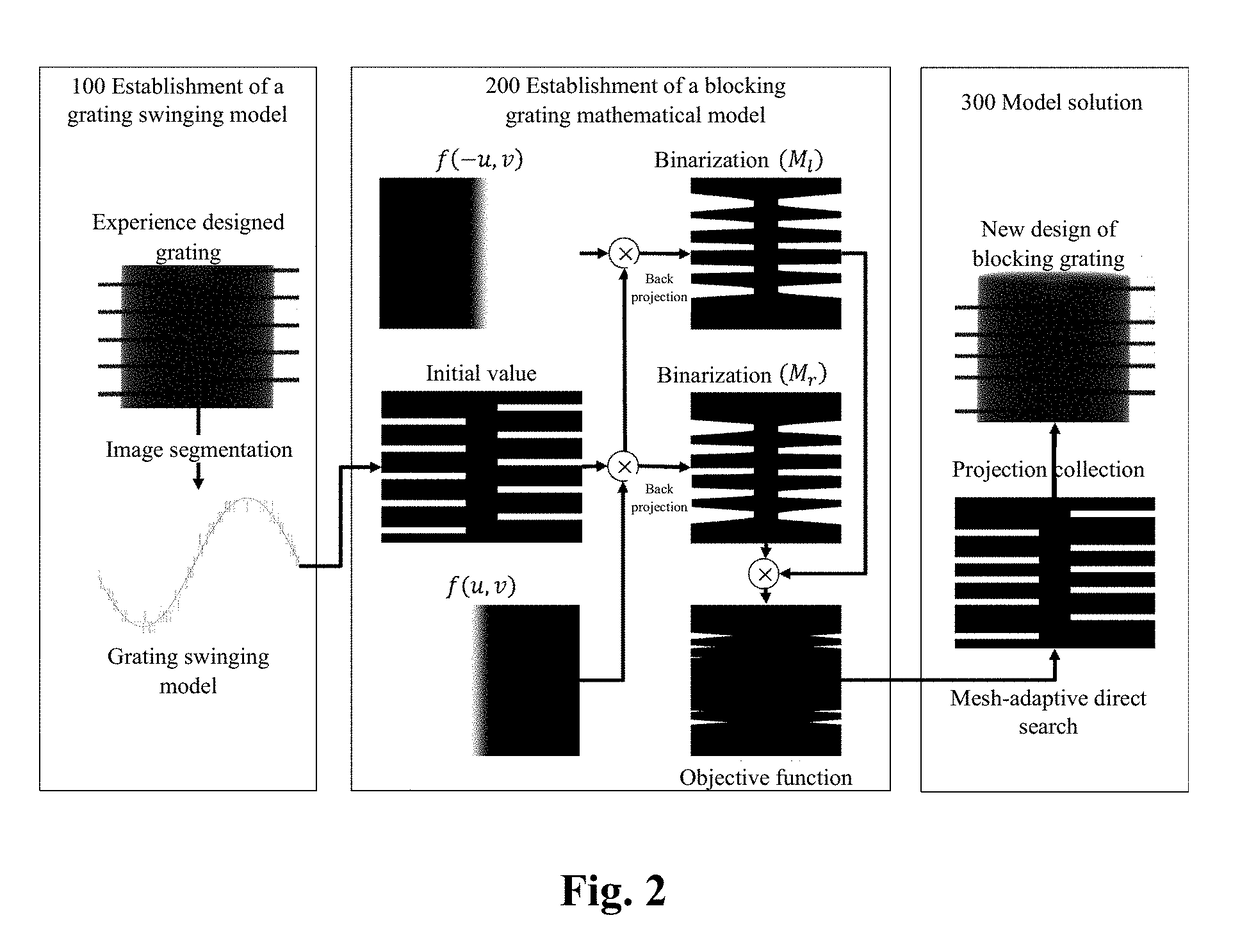Method and apparatus for optimizing blocking grating for cone beam ct image scattering correction
a cone beam and scattering correction technology, applied in the field of medical imaging, can solve the problems of affecting the accuracy of the ct value, the quality of the cone beam computed tomography image will be rapidly deteriorated, and the scattering photons cannot be modelled into the traditional ct reconstruction theory, so as to achieve accurate extraction of the scattering signal
- Summary
- Abstract
- Description
- Claims
- Application Information
AI Technical Summary
Benefits of technology
Problems solved by technology
Method used
Image
Examples
Embodiment Construction
[0021]Next, the technical solutions in the embodiments of the present disclosure will be clearly and completely described with reference to the drawings in the embodiments of the present disclosure. Obviously, those described are just a part rather than all of the embodiments of the present disclosure. Based on the embodiments of the present disclosure, any other embodiment obtained by a person skilled in the art without paying any creative effort shall fall within the protection scope of the present disclosure.
[0022]As known to a person skilled in the art, the embodiment of the present disclosure may be implemented as a system, an apparatus, a device, a method or a computer program product. Thus the present disclosure can be specifically implemented as complete hardware, complete software (including firmware, resident software, microcode, etc.), or a combination of hardware and software.
[0023]Next, the principle and spirit of the present disclosure are elaborated in details as foll...
PUM
 Login to View More
Login to View More Abstract
Description
Claims
Application Information
 Login to View More
Login to View More - R&D
- Intellectual Property
- Life Sciences
- Materials
- Tech Scout
- Unparalleled Data Quality
- Higher Quality Content
- 60% Fewer Hallucinations
Browse by: Latest US Patents, China's latest patents, Technical Efficacy Thesaurus, Application Domain, Technology Topic, Popular Technical Reports.
© 2025 PatSnap. All rights reserved.Legal|Privacy policy|Modern Slavery Act Transparency Statement|Sitemap|About US| Contact US: help@patsnap.com



